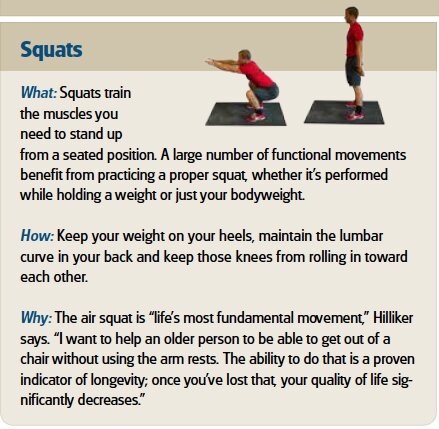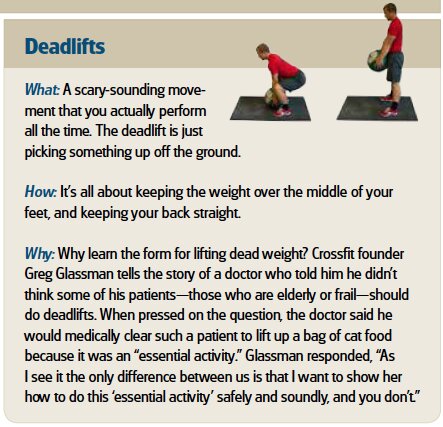A Step Toward Better Health
“Right now, your shoulders are probably saying, ‘Hello! Good morning! I haven’t done this in a while,’” Joel Hilliker says to a gym full of students. For Hilliker, the work of Trumpet editing is over, for now, and the work of coaching fitness for people of all ages and shapes has begun.
The students rotate lengths of lightweight plastic pipe over their heads, from front to back. If it’s done right, their shoulders will be “expressing their full range of motion,” Hilliker says. Looks of strain mixed with delight suggest that many muscles, ligaments and tendons are indeed waking up.
The youngest students are in their 20s and 30s, but most are over 50, and the eldest are in their 70s. No one here is trying to become a size 2. No one is here to build cosmetic muscle for swimsuit season. No one is exercising for the sake of improving his ability to exercise. The class, an extension of the Herbert W. Armstrong College physical education program, called “Fundamentals of Functional Movement,” is about just that: functional movement. The reason the students are here is to improve their health and their quality of life. They are here to function, and to function better.
Because of this, the exercises tend to mimic the activities of daily life. The shoulder presses the students are doing teach the same movements used for setting something on a shelf above your head. Squatting trains the ability to stand up from a seated position. Deadlifting mimics the movements used for safely picking things up off the floor. Lunges are a critical part of getting yourself up off the ground.
A Strengthening Trend
Hilliker’s class is just one instance of a growing trend—a great trend. Commercial gyms all over the Western world are holding classes for older adults. Exercise programs for seniors ranked sixth on the list of top fitness trends last year published by the American College of Sports Medicine. Functional fitness ranked eighth.
Why are these programs taking off? Partly because more people are taking action to reverse the obvious and dramatic decline in the fitness of the general population. This decline, caused by poor diet and lack of movement, has affected almost everyone in Western society, and functional-movement students know they have to work to fight it.
What also makes such classes attractive is that anyone can take part. “[B]elieve me when I say if I can do it anyone can,” said Joe Schweda, a 48-year-old electrician who admits to being “king of the couch potatoes” before he started a functional fitness program in Wisconsin. “I have gained strength and energy. … I really can’t imagine a better program for total body fitness.”
Functional fitness is also gaining popularity because participants see results quickly. After just three months of classes, administrative assistant Patty Neubauer said: “I hit 50 this year, and I am not slowing down. In fact, since signing on … I’m speeding up! I am stronger, have considerably less back pain and a lot more energy!”
These students are learning something many people don’t realize: Ultimately, fitness isn’t about youth or image or a natural high. It’s about functioning better. Everyone needs to do that. And the good news is, everyone can.
“Our body remains remarkably resilient even when we neglect it for a long time,” Hilliker says. “Elderly people who begin an exercise program can reverse many of the effects of aging.”
This means that you can function better and live better—no matter what your age or how poor your current level of fitness. You can make simple, realistic changes immediately that will move your fitness and your quality of life in the right direction.
Muscle Matters
One of the most valuable and important benefits to functional fitness is an increase in muscular strength.
Strength isn’t important just for athletes and lumberjacks. It’s also crucial for those enjoying the slower pace of the golden years. “[T]he maintenance of strength and the maintenance of bone density is what enables our quality of life to be maintained into old age,” says fitness coach and author Mark Rippetoe.
How much more will you enjoy those golden years if you are independent? If you can spend an afternoon actively playing with your grandchildren on the playground? If you can beautify your home and property? If you never have to miss out on benefits for yourself and others because your body has betrayed you?
Maintaining muscular strength is vital in preserving quality of life over time. But it does not happen without effort.
Individuals in their 30s, 40s and 50s who do not regularly exercise (or otherwise live strenuous lives) generally lose 10 percent of muscle mass per decade. People in their 50s and 60s lose 15 percent per decade—and after that, 30 percent per decade.
By contrast, individuals ages 60 to 90 who undertake resistance training on a regular basis significantly slow that process. They average less than 5 percent loss of muscle mass per decade—and in the initial stages of such a program, it is typical to regain a lot of the muscle you once had.
Besides maintaining strength, there are numerous other benefits to sustaining fitness as you age: Reduction in risk of high blood sugar, improvement of balance, reduction in risk of type 2 diabetes, increasing flexibility and joint range of motion, boosting happiness and confidence, lowering the risk of falling, relieving arthritic pain, decrease in loss of reaction time, reduction of mental decline, and numerous others.
Yet despite the very obvious benefits of working toward fitness, and despite the obvious dangers of allowing yourself to “go dormant,” about 32 percent of older adults report having no physical activity time in a given month.
Which trend will you join? Will you take it easy and surrender to age? Or will you wake up those shoulders and the rest of your muscles, and realize the increased quality of life that comes from simple exercise?
If you’re ready to see this law of health activate in your life, commit to getting up and getting active. And if possible, begin your training in functional movement under the guidance of a trained professional. Even after just one session, you are virtually guaranteed to feel some of your muscles saying, “Hello! Good morning!” And that is a wonderful feeling. The time to start is today.



